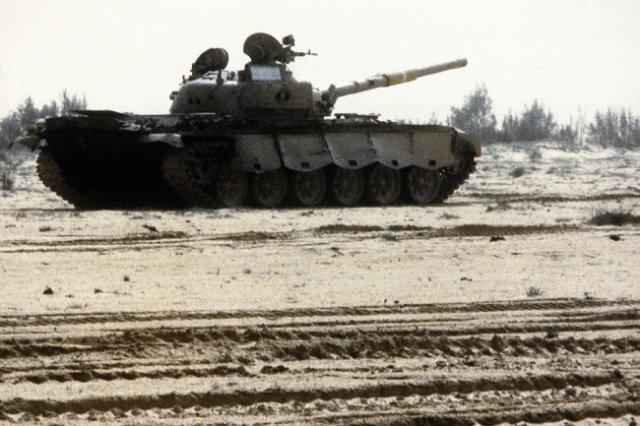In the 80s, during the Iran-Iraq war, various unusual-looking samples of military equipment appeared. For example, this T-72 tank in the photo.
The Iraqi military improved it with Chinese help, which, given the very tense relations between the Soviet Union and the PRC at that time, was not quite an ordinary thing.
In most cases, such refinement was carried out not on the relatively new T-72M1, but on the first export versions of the Ural delivered in the late 70s. They had four rotating steel screens on the sides on each side, which were supposed to perform anti-cumulative functions, reducing the penetration capacity of recoilless projectiles, shots of rocket-propelled hand and machine grenade launchers.
Opinions vary as to how effective such protection turned out to be, however, due to operation in extreme combat conditions, most tanks lost their screens over time.
At the same time, during the fierce eight-year conflict, the Iraqi army suffered heavy losses in armored vehicles. The Soviet vehicles of the first generation after the Second World War, the T-55 and T-62 medium tanks with monolithic armor, were easily hit by the Iranians' missiles of modern at that time heavy anti-tank missile systems BGM-71 TOW and portable American-made M47 Dragon.
Very often, these combat vehicles received such damage that they could not be returned to service, and many "teshek" were captured by the Iranians in the form of trophies.
In order for the tank fleet to remain numerous all the time, Baghdad had to buy tanks not only in the Warsaw Pact countries, but also in China. From there, upgraded versions of the Type 59-I - 700 pieces and about a thousand Type 69-IIG arrived. Their undercarriage was covered by five-section shaped side screens. The Iraqis liked them so much that they started buying additional kits for installation on the T-62 and T-72.
Optical interference generators manufactured by China were also installed on the latter, which were believed to be a simplified analogue of the Curtain optoelectronic counteraction complex. And if these innovations were useful during the war with Iran, then during the battle for Kuwait they turned out to be practically useless.
Alexey Moiseev

